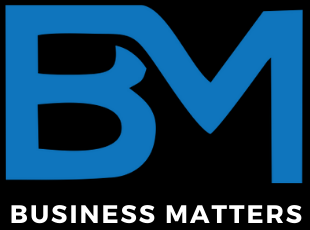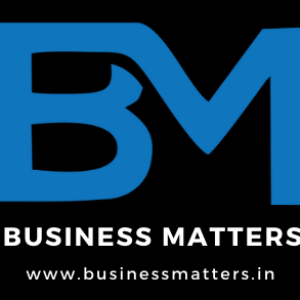Securing funding is a major hurdle for early-stage startups, especially when they lack tangible assets or a track record. One of the critical terms in debt financing is collateral security, which often becomes a sticking point for startups wanting loans or credit.
Understanding what collateral security means, how it works, how Indian policies are evolving, and what alternate routes exist is essential for any entrepreneur in India.
In this blog, we’ll explore collateral security in the context of Indian startups, the regulatory landscape, alternatives, risks, and practical strategies.
Why Collateral Security Matters in Lending
Before diving into definitions, let’s understand why collateral security exists in the first place:
- Risk mitigation for lenders: When banks or financial institutions lend money, they face the risk of default. Collateral gives them a fallback — a tangible asset they can seize or liquidate to recover some or all of the loan amount.
- Cost of capital / interest: Loans backed by adequate collateral often carry lower interest rates, because the lender’s risk is lower.
- Loan size and tenure: Having collateral can help the borrower access larger loan amounts or longer tenures.
- Discipline / motivation: Because collateral links the borrower’s personal/business assets to the loan, it provides a motivation to repay.

However, collateral security also creates barriers:
- Startups may lack adequate tangible assets (machinery, property, land, etc.).
- The evaluation, enforcement, or valuation of collateral can be cumbersome, especially for intangible assets or in less-developed markets.
- It concentrates risk on the entrepreneur’s personal assets, which may deter founders from seeking debt.
Hence, collateral security plays a double-edged role: enabling safer lending while creating friction for new businesses.
Definition and Mechanics of Collateral Security
What is Collateral Security?
“Collateral security” refers to an asset pledged by a borrower to a lender to secure a loan or credit. If the borrower fails to repay according to agreed terms, the lender can seize, liquidate, or foreclose on the collateral to recover the dues.
Key features:
- Secured vs Unsecured: A secured loan is backed by collateral; an unsecured loan is not (or relies only on the borrower’s creditworthiness).
- Lien or charge: The lender has a legal right (a lien or charge) on the collateral. This right needs to be registered (often under relevant acts, e.g. the Indian Registration Act, or specific mortgage / security acts).
- Valuation and margin: Lenders usually apply a margin — that is, they may not accept 100% of an asset’s nominal value as collateral. They might discount its valuation or accept only up to a certain percentage.
- First / second charges: Sometimes collateral may have multiple claims. The lender may hold a “first charge” (priority) or “second charge” (subordinate) on the asset.
- Assignment or pledge: Depending on the nature of the collateral (movable or immovable), the mechanism might be pledge, mortgage, hypothecation, assignment, etc.
Mechanics in the Startup Context
In the world of startups, collateral security may be offered in various forms:
- The founder’s personal real estate
- Machinery, equipment, vehicles
- Intellectual property rights (IP)
- Shares or equity stake (sometimes, pledge of shares)
- Receivables, inventory, or contracts (in some lending models)
But each form brings challenges — valuation, enforceability, and liquidity.
When startup does not have enough traditional collateral, lenders often require personal guarantees from founders or additional security.
In some loan agreements (especially venture debt or hybrid instruments), lenders may accept soft collateral (like assignment of IP or revenue streams) or restrict business actions (e.g. a covenant over assets).
Types of Collateral Security
Here are common categories of collateral assets:
| Type | Description | Advantages / Disadvantages |
|---|---|---|
| Movable assets / machinery / equipment | Pledging machines, vehicles, equipment | Easier to value; but may be used / worn out; might not cover full value |
| Immovable property / real estate / land / buildings | Most traditional form of collateral | High value and stable; but lengthy legal registration, challenging enforcement |
| Inventory / Receivables / Stock-in-trade | Lien over working capital assets | Useful for operational loans; but fluctuating value, higher monitoring |
| Intellectual Property / Patents / Trademarks / Copyrights | Pledging or assigning rights | Especially relevant for tech startups; but valuation and enforceability are complex |
| Equity / Shares | Pledging shares in the company | Founders may pledge their shareholding; but under stress, this may dilute control |
| Bank Deposits / Cash / Securities | Pledging fixed deposits, bonds, etc. | High liquidity, safer for lender; but startup may not have surplus reserves |
| Assignment of contracts / revenue streams | Using future cash flows or customer contracts as security | Common in structured finance or revenue-based lending models; risk lies in future revenue performance |
Depending on the nature of the business and assets, lenders may accept mixed collateral (a combination of types) or create composite security structures.
Collateral Security’s Role (and Limitations) in Startup Funding
Role in Startup Funding
- Credit / Debt instruments: Collateral allows startups to access debt (e.g. term loans, working capital loans) which might be cheaper than equity financing.
- Venture debt: In many startup ecosystems, venture debt providers may accept some security or guarantee from founders or take a charge on assets.
- Bridge funding / scaling capital: As startups scale, they may need capital for expansion that equity dilution may not be favorable; collateral-backed debt can help.
- Risk buffer: Lenders see collateral as buffer, which makes them more willing to lend.
Limitations & Challenges for Startups
- Lack of tangible assets: Many startups, especially in early stages, have minimal physical assets.
- Valuation difficulty: For intangible assets (like software, IP, brand), valuing them and enforcing claims is difficult.
- Legal and procedural complexity: Mortgages, pledges, registration, enforcement — all require legal infrastructure.
- Dilution of control / personal risk: Founders may avoid pledging personal property or shares because of the downside if things go wrong.
- Liquidity / resale risk: In the event of default, converting collateral to cash may take time and incur losses.
- Over-leveraging risk: Taking too much debt secured by collateral can stretch business risk dangerously.
Hence many early-stage startups either avoid debt in favor of equity or rely on collateral-free lending schemes or guarantees.
Indian Regulatory & Policy Context
For startups in India, understanding how collateral security intersects with government schemes and regulations is critical.
Startup India / Government Efforts
Recognizing that collateral is a key challenge for startups, the Indian government under Startup India has introduced policies and schemes to reduce reliance on collateral. One such important initiative is the Credit Guarantee Scheme for Startups (CGSS).
Credit Guarantee Scheme for Startups (CGSS)
- The Credit Guarantee Scheme for Startups aims to provide collateral-free debt funding to eligible startups.
- Under CGSS, a guarantee is provided (through a trustee company) to the lending institution. Thus, the lender is covered (to a certain extent) if the startup defaults.
- The guarantee covers multiple credit instruments (working capital, term loans, venture debt).
- The scheme offers credit guarantees of up to ₹10 crore, net of value of any collateral provided.
- The scheme is “collateral-free” in the sense that the startup need not provide additional security, as guarantee cover reduces lender’s risk.
- It is expected to catalyze debt financing for startups that earlier struggled because of lack of collateral.
The policy push reflects that the government recognizes collateral is a barrier, and it is trying to create structures to bypass or mitigate it.
CGTMSE (Credit Guarantee Fund Trust for Micro & Small Enterprises) & MSME Guarantees
While CGTMSE primarily targets MSMEs, not startups per se, it is relevant in the broader financing ecosystem:
- CGTMSE provides collateral-free credit to micro and small enterprises.
- Many small businesses, hybrid startups, or early-stage ventures sometimes leverage MSME schemes.
- The guarantee provided under CGTMSE covers a portion of the loan (e.g. up to 75–80%) to reduce risk for banks.
Hence startups may sometimes fit into MSME brackets (depending on business type) or leverage such guarantees.
Recent Policy Updates & Challenges
- The Union Budget 2025–26 has emphasized enhanced credit availability to startups, including guarantee cover.
- However, the guarantee scheme has limits: it doesn’t fully cover 100% risk; often there are co-sharing, caps, eligibility scrutiny.
- Also, even with guarantee, lenders may demand some partial collateral, or impose stricter covenants.
In short, the Indian regulatory environment is evolving to reduce collateral dependence, but challenges remain.
Collateral-free / Reduced-collateral Alternatives for Startups
Given the limitations of collateral-based lending for early-stage startups, several alternatives or hybrid models are increasingly common:
1. Government-backed guarantee schemes (already discussed above)
- CGSS for startups
- CGTMSE for MSMEs
- Other state-level or sector-specific guarantee funds
These act as partial substitutes for direct collateral by transferring or sharing risk.
2. Unsecured / collateral-free loans
Some banks or NBFCs provide unsecured business loans or lines of credit based on credit history, cash flow projections, or the founder’s credit score. These typically have higher interest rates or stricter terms.
3. Revenue-based financing / royalty-based financing
Lenders provide funds in exchange for a fixed percentage of future revenues until repayment is met. Since repayment is based on actual cash flows, this model is attractive to startups with decent revenue. (E.g. fintech / growth finance companies)
Some Indian startups / finance firms (or fintechs) offer this alternative.
4. Venture debt & hybrid instruments
In venture debt, lenders often take a mix of equity warrants or convertible instruments and may require soft security (e.g. pledging of founder shares or assignment of IP). While not purely collateral-free, the burden is lighter.
5. Asset-backed lending with non-traditional collateral
Instead of property, a lender may accept (with discount) intangible assets: IP, licensing contracts, subscription revenue, SaaS contracts, or accounts receivable.
6. Personal guarantees or founder commitment
Even when collateral is minimal, founders may provide personal guarantees — a moral / legal commitment, which adds creditworthiness. However, this places personal risk on founders.
7. Crowdfunding / debt crowdfunding / peer-to-peer lending
Platforms allow startups to raise debt from individual backers, sometimes under terms which may not demand collateral, though terms may be stringent.
Risks, Challenges & Best Practices
Key Risks & Challenges
- Default and foreclosure risk: If the startup fails, pledged assets may be lost or forcibly sold.
- Valuation disputes: Disagreements may arise about the value, condition, or depreciation of pledged assets.
- Legal enforcement delays: Litigation, auctions, or repossession can be delayed or contested.
- Moral hazard: Founders may take excessive risk knowing collateral is there; or lenders may overvalue assets.
- Illiquidity / loss in sale: Asset sale may fetch less than book value or require time to find a buyer.
- Operational constraints: Using business assets as collateral may limit the startup’s ability to freely use them.
- Founder’s personal liability: Personal property or guarantees may lead to personal financial distress.
Best Practices for Startups & Lenders
For a startup founder:
- Minimize risk: Only pledge assets that you’re ready to risk; avoid overleveraging.
- Transparent valuation and audits: Use professional appraisal, third-party assessments.
- Understand legal framework: Know the mortgage laws, registration requirements, foreclosure process in your state.
- Negotiate margins and charges: Ask for better collateral discounts, first-charge vs second-charge terms.
- Seek guarantee-backed schemes: Use CGSS or other schemes to reduce collateral burden.
- Maintain liquidity buffers: Don’t immobilize your entire asset base; keep reserves.
- Diversify funding sources: Don’t rely only on debt; combine equity, grants, alternative finance.
- Document everything: Proper documentation, legal covenants, condition clauses, release mechanisms.
For lenders:
- Rigorous due diligence: Verify ownership, enforceability, encumbrances.
- Stress testing: Model worst-case scenarios for collateral value drop.
- Periodic revaluation: For movable or depreciable assets, re-check value over time.
- Covenants & monitoring mechanisms: Use periodic audits, inspections, reporting.
- Flexible foreclosure routes: Use auctions, sale procedures that minimize delays.
- Use guarantee schemes: Leverage CGSS or guarantee cover to reduce lender risk.
Case Studies / Hypothetical Examples
Hypothetical Example 1: SaaS Startup with IP but no physical assets
Startup: ABC Tech
Need: ₹2 crore for scale-up, office, hiring
Assets: Strong software product and user base; minimal physical assets
Challenge: No property, equipment, or tangible value
Possible structure:
- Pledge founder equity (say 20%) as soft collateral
- Assign future subscription revenue streams (e.g. next 12 months)
- Use CGSS guarantee to reduce the required security burden
- Offer personal guarantee from founders
If default occurs, lender can enforce equity pledge, revenue assignment, and then rely on guarantee cover.
Hypothetical Example 2: Manufacturing Startup with moderate plant & machinery
Startup: XYZ Manufacturing
Need: ₹5 crore capital to expand production
Assets: Land and building worth ₹3 crore, machinery worth ₹2 crore
Structure:
- Mortgage the land & building (first charge)
- Pledge machinery (second charge)
- Lender discounts value (say 70% of property, 60% of machinery)
- Borrower keeps buffer for working capital
In this case, collateral is more tangible and enforceable.
Realistic Policy-backed Example (India)
A startup applies under CGSS to borrow ₹8 crore. The lender gets guarantee cover (say up to 80%) from the scheme, so they only require security for the remaining 20%. This reduces the collateral burden on the startup while still giving the lender downside protection. (This is illustrative, subject to scheme rules)
These examples highlight how hybrid or creative structures can help startups bridge the collateral gap.
Conclusion
Collateral security plays a central role in traditional lending, serving as a risk buffer for lenders. But for startups — which often lack tangible assets or historical cash flow the requirement for collateral becomes a major barrier to debt financing.
In India, policy initiatives such as the Credit Guarantee Scheme for Startups (CGSS) are helping reduce the dependency on collateral by offering guarantee cover to lending institutions.
However, collateral isn’t going away entirely; rather, startups and lenders are innovating around it — using soft collateral, pledging equity, tying future revenues, taking personal guarantees, or combining guarantee schemes with partial security.
But with these alternatives come new risks, complexity, and need for strong legal, financial, and operational diligence.
For any startup founder in India, understanding the mechanics, risks, and alternate models is critical not just to raise capital, but to do so responsibly and sustainably.
Frequently Asked Questions (FAQs)
Q1. Can a startup get a loan in India without any collateral?
Yes — through collateral-free loans or guarantee-backed schemes. The CGSS scheme allows startups to access debt funding without requirement of additional collateral, as lenders receive guarantee coverage. Many banks/NBFCs also offer unsecured business loans, though with stricter criteria.
Q2. What types of assets can be pledged as collateral by a startup?
Typical assets include property, equipment, machinery, inventory, receivables, intellectual property, founder equity/shares, cash deposits, or even future revenue assignments.
Q3. How does CGSS guarantee work — does it fully replace collateral?
CGSS provides a guarantee to lending institutions, which acts as a safety net. But it may not cover 100% risk; lenders might still insist on partial security or stricter covenants.
Q4. What are the disadvantages of offering collateral as a startup?
Key risks: losing pledged assets if business fails, disputes over valuation, legal enforcement complexities, illiquidity, personal liability, reduced flexibility for operations, and over-leverage.
Q5. How can startups mitigate the burden of collateral?
Use guarantee schemes, negotiate favorable terms, pledge only non-essential assets, diversify funding (equity + debt), use alternative financing (revenue-based, venture debt), and maintain contingency buffers.

